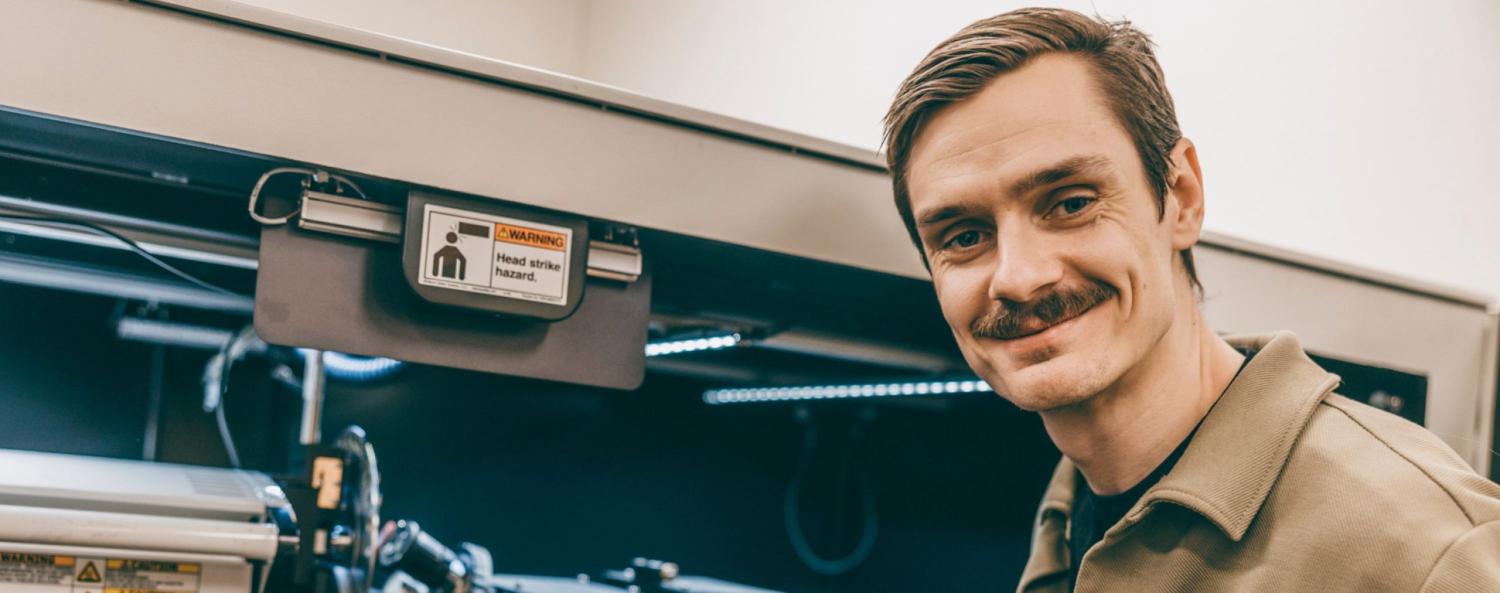How More Engineering Students Can Discover Fiber Composites
The need for more engineers in the fiber composites industry is growing rapidly. At the same time, few students are familiar with what fiber composites are or the role they can play in the green transition. We spoke with Karl Arvidsson, a PhD student at Luleå University of Technology, to hear his perspective.

The need for more engineers in the fiber composites industry is growing rapidly. At the same time, few students are familiar with what fiber composites are or the role they can play in the green transition. We spoke with Karl Arvidsson, a PhD student at Luleå University of Technology, to hear his perspective.
– I notice that many people—both inside and outside the engineering world—know very little about fiber composites. When I first took an introductory course, I saw it as ‘just another material.’ Plastic often carries a negative connotation, but fiber composites are something else entirely. They can be sustainable thanks to properties that traditional materials simply don’t have.
From Construction to Composites
Karl Arvidsson is originally from Linköping and began his career in the construction industry after high school. After a few years, he shifted gears and began studying mechanical engineering—first in Karlstad, then a master’s in applied mechanics at Chalmers University of Technology in Gothenburg.
– I wasn’t particularly interested in composites at first, but during my master’s program in fiber composites, my curiosity grew. It was a material that stood out from the traditional ones we had learned about. It’s both complex and relatively new, which means there are many challenges waiting to be solved.
After completing his studies, he landed his first job in offshore wind and the composites industry in Gothenburg. But both professionally and personally, he and his partner were longing for something more—and for the North.
– We had always dreamed of moving north. We wanted real winters, skiing, and access to the mountains and nature. At the same time, I had heard great things about LTU and its composite research. Professors at Chalmers who had earned their PhDs there spoke highly of the research environment and the strong industry cluster in Öjebyn, with its connection to RISE. The combination of a leading research environment and a new adventure drew us in.
Three Ways to Boost Interest in Fiber Composites Among Engineering Students
1. Highlight the industry’s needs and opportunities
Sweden’s fiber composite market may not be huge, but the companies that exist are desperate for skilled engineers. There’s great potential to attract more students by clearly communicating the job and career opportunities available.
2. Communicate the potential of fiber composites more effectively
Both industry and universities can do more to showcase how fiber composites are used across various sectors and the kinds of technical and sustainable solutions they enable. Students need a clearer picture of what a career in fiber composites could look like.
At the same time, universities should actively highlight research and thesis projects in the field. Sustainability plays a key role here. Recycling and more sustainable material choices are top priorities for both industry and academia, and this needs to be communicated outward to engage more students.
3. Strengthen collaboration between universities and industry
For many students, the transition from studies to work can feel like a big leap. More industry contact during their education could make a big difference. A continuous dialogue can also lead to more collaboration around internships, thesis projects—and may be key to sparking broader interest in fiber composites.
Photo: Johanna Fond


